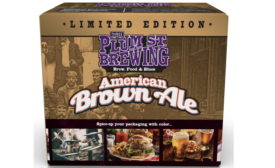Blog
Virtual Pre-Print: A Secret Weapon within the Combat for Relevance
Digital Pre-Print: A Secret Weapon in the Battle for Relevance
A recent survey of 200 U.S. brand managers and packaging stakeholders revealed that 72 percent have seen brand packaging affected by the introduction of more sub-brands, products and SKUs over the past two years. That trend is likely to continue, with brand owners forecasting significant growth in the number of sub-brands, products and SKUs within the next five years.
What is driving this trend? The battle for relevance. Retailers are competing in a world that increasingly values convenience and cost savings. To give themselves a fighting chance, traditional retailers are doing everything possible to create a shopping experience that encourages consumers to stay in stores longer and visit more often. That also extends to the store shelves, where the goals of retailers and brands come into full alignment. Both are looking to connect with consumers at the point-of-sale with attractive, engaging packaging in order to drive purchases — the ultimate test of relevance.
National brands are also facing pressure from store brands, giving them additional incentive to connect with consumers in stores. More frequent packaging refreshes and more sub-brands that provide increased choices are key tactics employed by national brands. This requires bringing multiple messages and products to market at the same time.
That’s no small challenge. An ever-growing set of sub-brands and SKUs introduces a host of complexities at every level of operations, from supply chain management to marketing. In addition, a more customized product line makes it increasingly difficult to accurately predict demand for any single SKU.
That can lead to waste, particularly in packaging as large minimum orders sit in warehouses waiting for product demand that may never come. And how can a workflow intended to manage one brand packaging update a year effectively get seven times that many SKUs to the shelves?
The simple answer is that if you’re relying on analog print in a rapidly changing retail market, it can be difficult to keep up. Maximizing the potential opportunities of a customized product line requires a digital workflow for packaging that increases your speed to market and lowers the minimum order. It enables on-demand ordering, rather than warehousing six months’ supply, giving you the ability to manage demand volatility. Waste is reduced dramatically because you’re no longer forecasting – you’re directly responding to consumer demand.
Digital print also allows brands to aggregate print runs for multiple sub-brands or SKUs. This lowers minimum order quantities dramatically while preserving the economies of scale achieved at high volume. That, in turn, creates limitless possibilities for extending marketing campaigns to the package. Once you move from a world where packaging takes five months to produce and step into the new reality of a two-week turnaround, a whole set of marketing and consumer engagement opportunities begins to occur. For example, some national brands have maximized consumer engagement by producing thousands of variations of a packaging design featuring user-submitted photos.
Producing 1,000 box designs may be a higher scale of variability than most brands are interested in, but that doesn’t mean that relevance is out of reach. Increasing your relevance to a consumer can be as simple as creating packaging that incorporates the name of their city or local sports team. And every additional bit of relevance for your brand increases your chances of moving product off the shelf and growing your bottom line.
Maximizing opportunities to build brand relevance through packaging requires moving at the speed of digital. Adding digital print to your toolbox is an investment, but it is much smaller than the opportunity cost of managing a customized product line solely with analog-printed packaging. Any brand that is serious about staying ahead of the competition should consider adding digital to its packaging mix.

